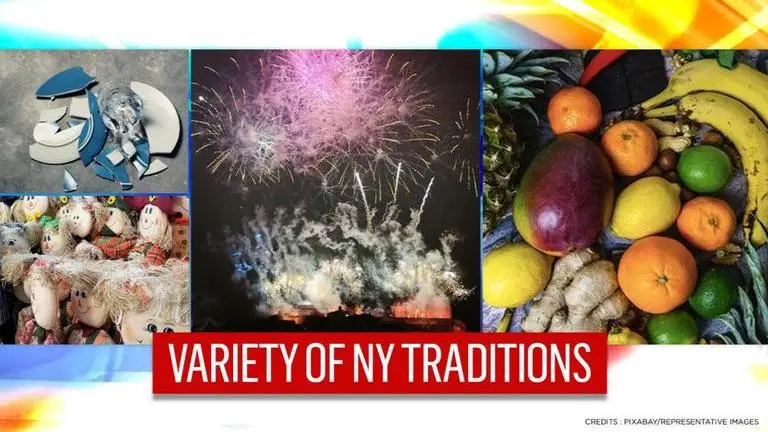Updated 30 December 2020 at 21:12 IST
New Year traditions: Unique practices people follow worldwide to celebrate New Years Eve
Citizens of Ecuador mark the arrival of New Year by setting ablaze the effigies that represent the year gone by, while Nordic tradition is about tin casting.
- World News
- 4 min read

As the new year approaches, countries worldwide gear up to commemorate a fresh beginning in their own unique style and quirky traditions. While the New Year’s fireworks illuminating the skyline is one of the most common sights of celebrations by which, people aim for prosperity, hope, and wellbeing in the year to come, there are also some of the rare and unique ways in which people across some nations will welcome 2021. Here’s a list of some of the most unheard-of traditions and customs adhered to this holiday season by people of different origins on the eve of the new year.
Tin casting
In Nordic tradition, people melt the tin cans or pieces of metal such as the horseshoe as a way to celebrate the new year. They submerge the molten metal into the container of ice-chilled water for it to harden into a different and unique shape. This, as per the tradition, brings good fortune in the coming year. In case of the bubbles, or shattering of the metal in the water, the individuals can expect the new year to fetch abundant monetary gains and a future filled with good tidings.
Mistletoe under the pillow
Single women in Ireland place a popular wild berry associated with fertility in European mythology under their pillow on new year’s eve and burn it in the fire the next morning in the hope to find love or a perfect match in the year to come. In another Irish tradition, women also tap the Christmas bread on the walls and doors of their household to “ward off evil.”
Advertisement
All-round ‘Fruit table’
Oranges, watermelons, apples, cantaloupe, grapes, and all fruits one can possibly find in the Philippines in one dish. Filipinos celebrate the new year tradition with 12 different fruits. Each symbolizes a month in the new year. Interestingly, the fruits are usually all round as the Filipinos believe that anything round is a harbinger of prosperity and wellbeing. Locals are seen donning attires in polka dots and cash is stored in round pockets, ladies, meanwhile put around their necks a round stone necklace to welcome the new year in this decades-old tradition.
Advertisement
Confetti fluttering
In Argentina, particularly in the streets of Buenos Aires, people tear apart their old documents and scatter them out of their windows on New Year’s eve in a unique tradition. The practice symbolizes emerging out of the rough experiences of the past year and entering the new year with a clean slate. This practice is widely seen across many Latin American countries. Some, meanwhile, flush a bucket of water down the drains or discard the old furniture on the streets to give a ‘new beginning’ to their lives.
Burning Effigies
Citizens of Ecuador on New Year's eve mark the arrival of the new year by setting ablaze the effigies that represent the year gone by. The effigies designed as scarecrows or pop culture characters, artistic figures, politicians, etc that hold symbolic significance such as bad news of the year past, are burnt by the people to end the bad luck associated with it.
Smashing crockery
In what can be called a ‘strange’ tradition, the danish smash plates and old crockery at their doorstep or on the streets, which, they describe as a practice that symbolizes ‘good luck’. Many households smash the tableware and utensils collectively to welcome the new year. In another widely popular practice witnessed in Denmark, people are often seen jumping from a height, apparently “leaping” or “entering” into the new year with fervour.
Lucky colourful ‘Underwear’
In Latin America, the citizens practice the unique New Year custom of buying and wearing colourful underwear such as pink, white, and blue on December 31, discarding the old ones. Argentines shop for pink, in Turkey the citizens extensively buy the red, while the Mexicans and Bolivians choose yellow for the ‘good luck’. The Mediterraneans like the Turks choose a red that symbolizes a year filled with love and compassion.
Published By : Zaini Majeed
Published On: 30 December 2020 at 21:12 IST





